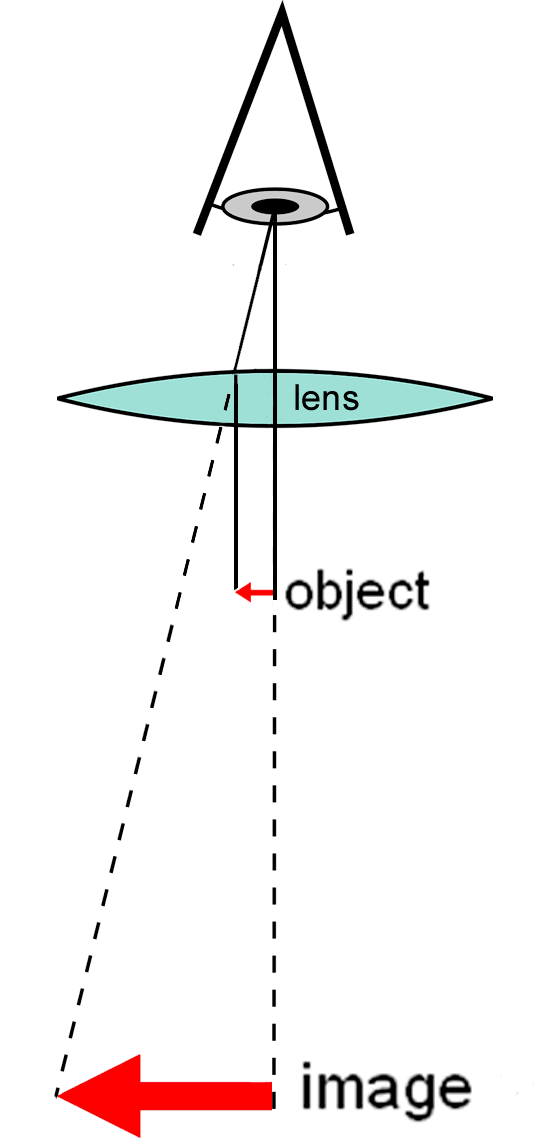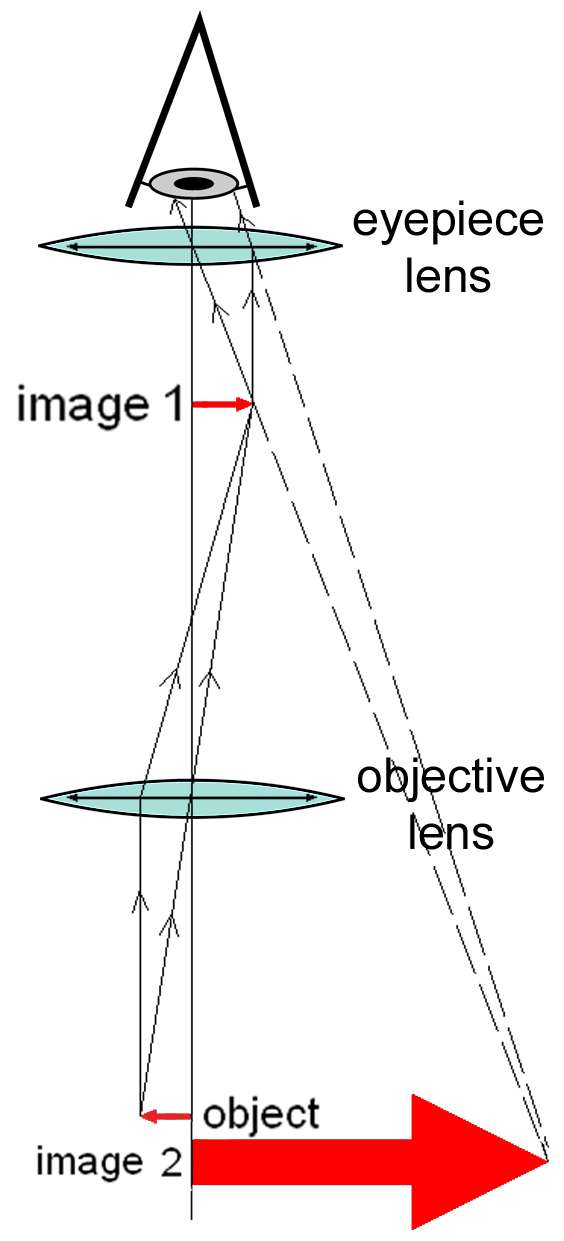

Simple vs
Compound microscope optics
A compound microscope uses an objective lens close to the object being viewed to collect light, which focuses a real image (image 1) of the object inside the microscope tube. That image is then magnified by the eyepiece lens, which creates an enlarged, inverted virtual image of the object (image 2). The optics of the eyepiece lens are essentially those of the simple microscope. The compound magnification is multiplicative, so that the objective / eyepiece combination creates much higher magnification. Eyepiece lenses are typically 10X, and a set of alternative Objective lenses may comprise 10X, 30X, and 100X, creating respectively 100X, 300X, and 1,000X magnification, the last of which is the limit of magnification with light waves in the visual range.
All text material
©2020 by Steven M. Carr